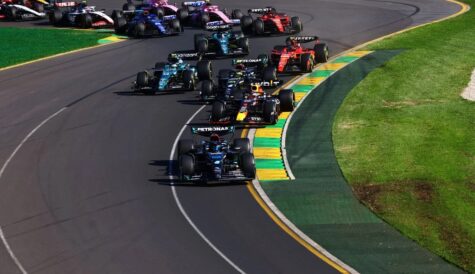Has the shine come off streaming?

Following a hell-for-leather dash to capture as many streaming subscribers as possible, there is currently plenty of evidence of an industry slamming its collective feet on the brake pedal and screeching, if not to a halt, at least to a much slower and more cautious pace.
This week saw several stories emerge that highlight the new, harder streaming landscape.
After a steady stream of restructuring news from Warner Bros Discovery, Walt Disney and AMC Networks, Paramount yesterday emerged as the latest studio to start shedding employees. Flagship TV Studios CBS Studios and Paramount TV Studios will both see cuts and the Paramount+ scripted originals team has been folded into the latter.
AMC Networks has meanwhile issued an SEC Filing in the US which estimates that the company will incur US$350-US$475 million in pre-tax restructuring charges as it seeks to turn the company around.
Earlier, AMC Networks chairman James Dolan had told staff that “the mechanisms for the monetisation of content are in disarray”.
Dolan expressed the central problem succinctly: “Our industry has been under pressure from growing subscriber losses. This is primarily due to ‘cord cutting’. At the same time, we have seen the rise of direct to consumer streaming apps including our own AMC+. It was our belief that cord cutting losses would be offset by gains in streaming. This has not been the case,” he said.
Warner Bros Discovery CEO David Zaslav and Walt Disney CEO Bob Iger having already raised concerns about the current economics of direct to consumer services. So is the golden age of streaming already over?
“I think the big media companies are only now noticing that the D2C SVOD model is extremely difficult in an oversaturated market. There are just too many streaming services – and few households (if any) are interested in buying 4-6 or more different SVOD services at the same time,” says Tony Gunnarsson, principal analyst, TV, video and advertising at Omdia, Digital TV Europe’s sister research outfit.
Service stacking is too expensive for consumers, particularly at a time of economic stress. Taking four or five services could cost upwards of US$50 a month. As streaming grew in popularity partly as a reaction to over-priced pay TV services, that is clearly problematic.
Gunnarsson also believes that “customers lose the sense of what’s available on each SVOD service” is they sign up to multiple offerings. Post-pandemic people are rationalising their consumption and paring down their self-started bundle to one or two services, he believes.
There are also perhaps now simply too many competitors in the space, something that has led the likes of John Malone to predict consolidation in the near future.
Gunnarsson believes that the top three – Netflix, Amazon and Disney – will weather the storm because “they are recognised generalist entertainment services with something for everyone” but he notes that the crisis in streaming is more generalised than might be expected, with Netflix and Disney also suffering from the downturn.
Long-term consequences
While the downturn in the economy may be temporary, the response of streamers to it may also have longer-term consequences.
Notable among these is the rush to adopt an ad-funded model, with the big streamers including even Netflix launching ad-supported tiers to get a better return on their huge investment in content and retain subscribers at the lower end who might otherwise churn.
“Ad-tiers will allow the big services to continue to experience growth for years to come – both subscriber numbers and household penetration will continue to go up. But it will also create new problems. The immediate impact will be a price war – Netflix Basic with ads offers a cheaper subscription and now others will have to respond,” says Gunnarsson.
If the current crisis has highlighted weaknesses in the streaming model, such as the lack of real loyalty to services and churn facilitated by the absence of long-term contracts, encouraging what Gunnarsson describes as “perpetual seasonality” in subscriber numbers, the model is likely to evolve, with the attractions of distribution partnerships becoming more evident over time.
“The number of SVOD subscriptions that are sold via operator bundling has doubled since 2019. We think wholesale SVOD will account for a third of SVOD in 2027 based on what we know today – but I imagine this could go a lot higher if streamers continue to struggle with D2C sales,” says Gunnarsson.
Revolutions tend to be followed by a period where the old order reasserts itself but absorbs elements of the new. Pay TV distribution platforms, prematurely written off by some, are seeing their value recognised as problems with the pure-play direct-to-consumer model become evident.



